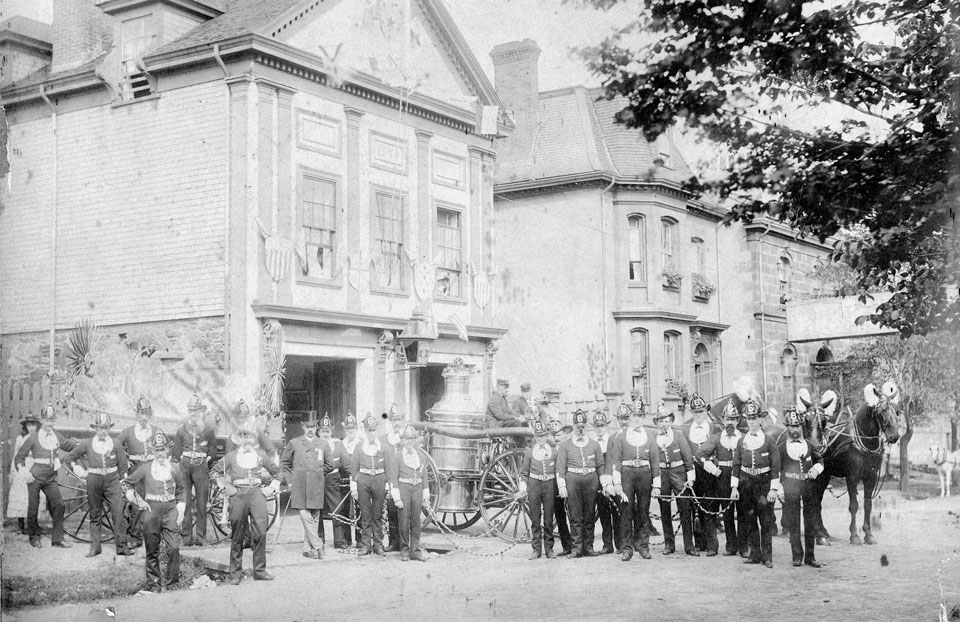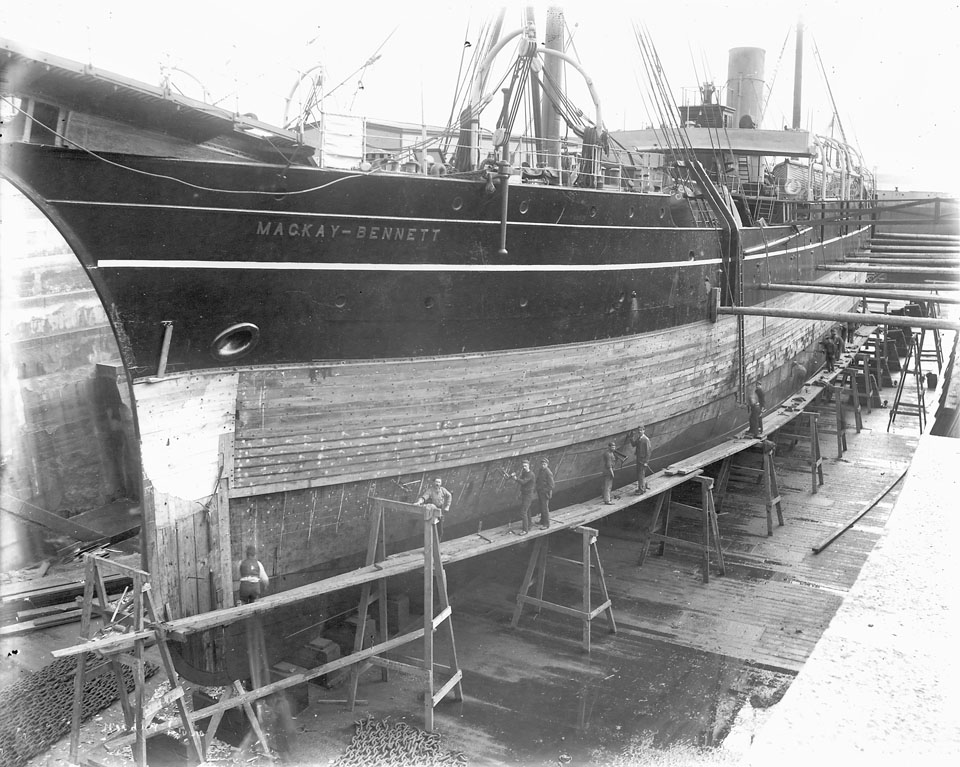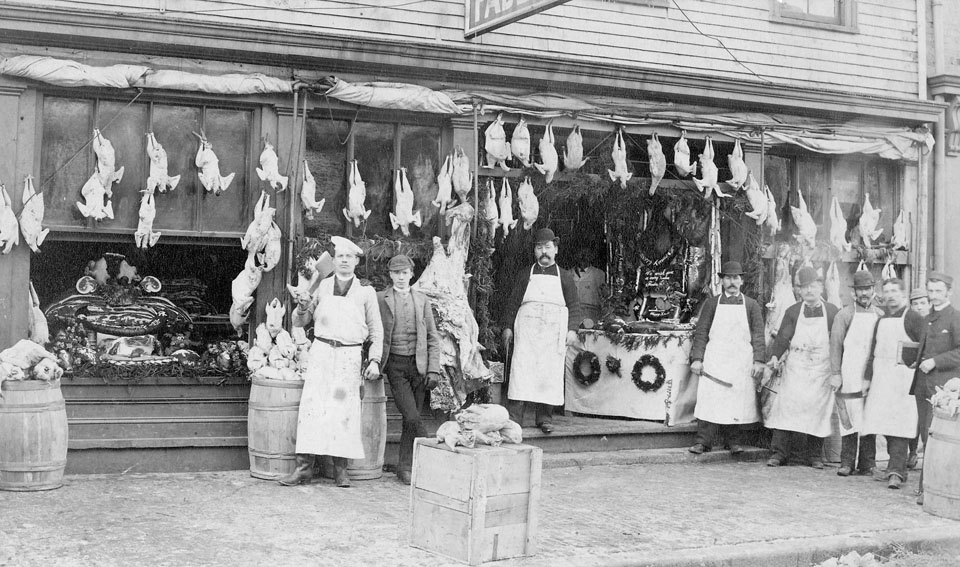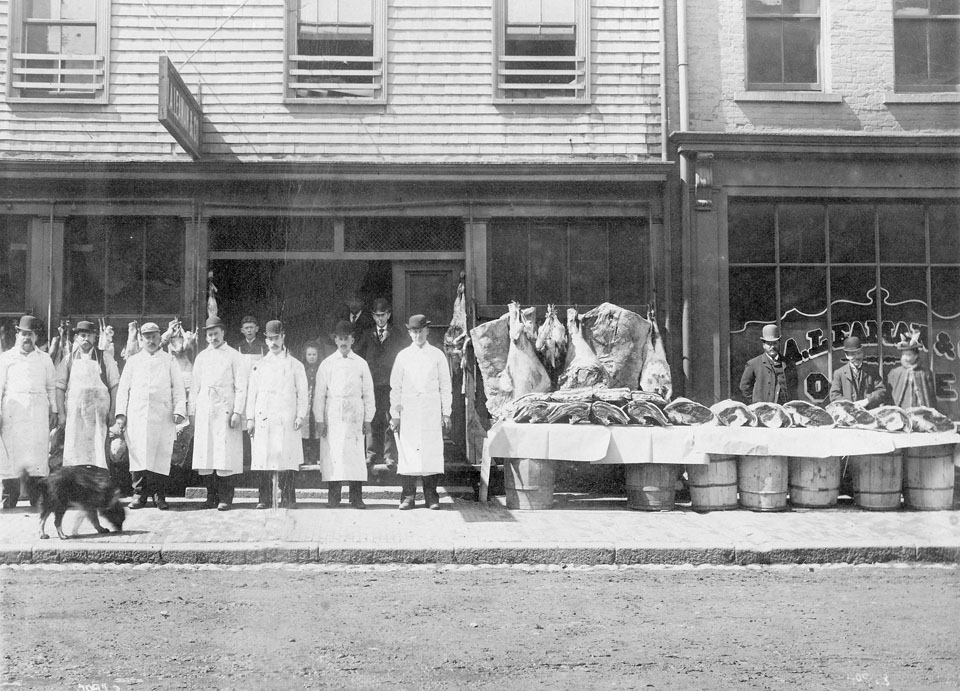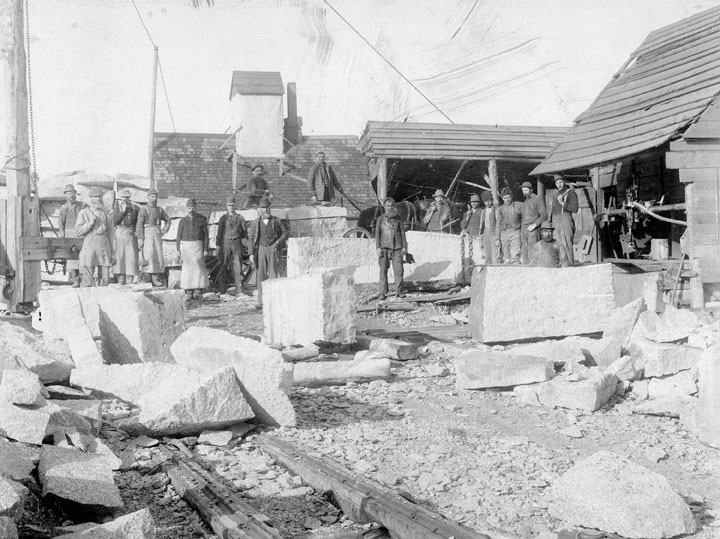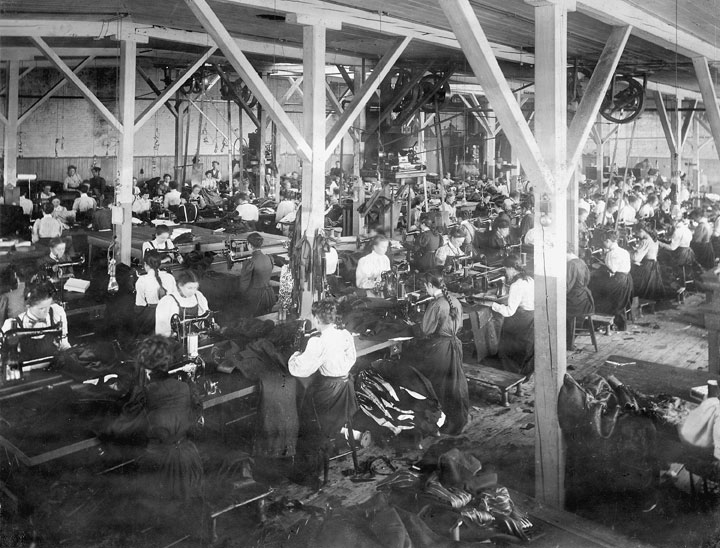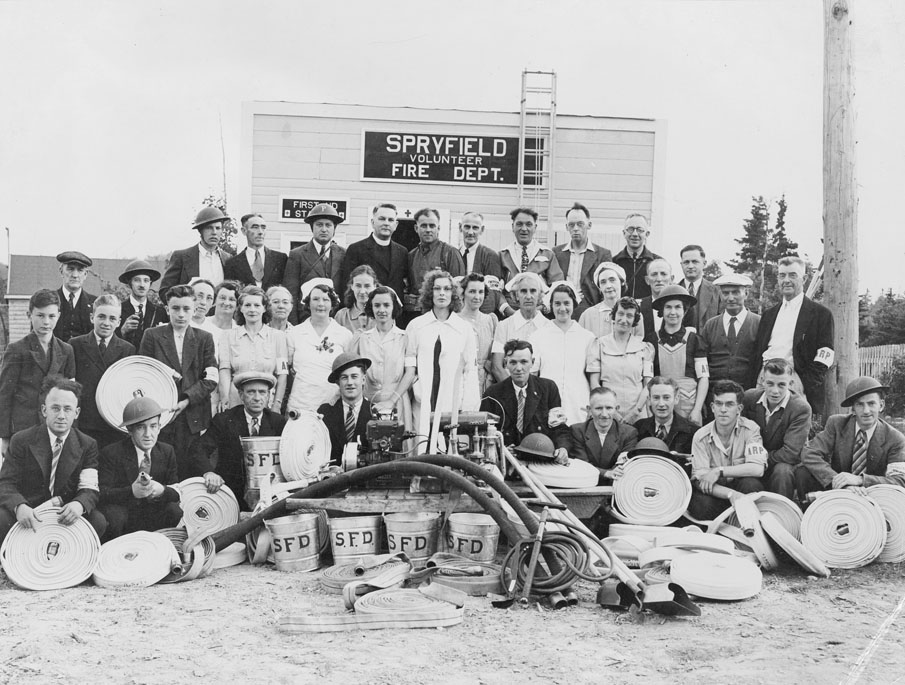Nova Scotia Archives
Halifax and Its People / 1749-1999
Occupations
In his bicentenary history of the city, Halifax: Warden of the North, Thomas H. Raddall wrote of the eighteenth-century community that
behind the industry of the merchants and townsfolk flourished the other side of Halifax; the brothels, the drinking dens, the underworld which nourished itself on the vices of the troops and fleet. Already the town was reputed the most wicked in North America. A Yankee settler, writing home to the Reverend Dr. Styles about this Sodom of the frontier, made a famous quip: 'There are 1,000 houses in the town. We have upwards of 100 licensed (drinking) houses and perhaps as many without license, so the business of one half the town is to sell rum and the other half to drink it.' His arithmetic was not quite equal to his wit, and his famous generality ignored the fact that the land and sea forces, who kept most of the taverns going, outnumbered the townsfolk by five or six to one.
The proportion of drinking establishments to general population had changed dramatically by 1881, when Halifax City and County had only 51 bar-keepers — but 23 brewers and distillers.
The Dominion Census of 1881 listed 12,933 people employed in Halifax City and 10,632 people employed in the County. The statistics were further broken down into those individuals working in agriculture (251 in the city; 3112 in the county); in commerce (3293; 849); in domestic employment (2351; 648); in industry (4588; 4533); in the professions (812; 303); and those not classified (1638; 1187). Of those employed in the county, 52% were either fishermen (2466) or farmers (3086); interestingly enough, there were 55 women calling themselves the latter. Servants totalled 2014 individuals in the city (262 male; 1752 female) and 588 in the county (114 male; 474 female). There were 56 physicians and surgeons (44 in the city; 12 in the county) and 72 midwives (65; 7). Government employees numbered only 146 (117; 29), and municipal workers were even fewer (29; 6). The military, a conspicuously large group, were — as usual — absent from the returns, being British in origin, transient in the community, and therefore not enumerated like the permanent population.
From the earliest days, most people living outside the city in what later became Halifax County, were employed in agriculture, lumbering, the fisheries, shipbuilding or other marine-related occupations. However, subsequent to the discovery of gold at Mooseland in 1858, mining operations commenced along the Eastern Shore at Waverley, Montague, Tangier, Moose River, Caribou Gold Mines, Dufferin Mines, Harrigan Cove and several other communities, continuing well into the twentieth century.
In 1909 I.J. Isaacs produced, with the approval of the local Board of Trade, a 'booster' booklet entitled The City of Halifax, The Capital of Nova Scotia, Canada: Its Advantages and Facilities. Isaacs wrote that Halifax "is the leading manufacturing centre of the Maritime Provinces. The industries carried on here are of a diversified character...". The city's iron and metal-works included a large rolling mill, various foundries, a number of machine shops and several engineering plants. Other manufacturing concerns included large sugar refineries in Halifax and Dartmouth, with 700-800 employees; an extensive cable, rope and twine factory in Dartmouth; a plant for the manufacture of railway cars; one of the largest clothing factories in the country; a cotton-goods factory; a large boot-and-shoe factory; a paint works; four breweries; a chocolate, coffee and spices factory; and an extensive manufactory of breads, biscuits and confectionery.
In 1991, exactly 110 years after the 1881 Dominion Census, the metropolitan labour force totalled some 182,310 individuals, working in the following categories: government service (16.52%), retail trade (12.67%), health and social service (10.69%), education (7.53%), manufacturing (6.84%), accommodation, food and beverage service (6.24%), construction(5.87%), business service (5.63%), wholesale trade (4.89%), finance and insurance (4.82%), transportation and storage (4.44%), communication and other utilities (4.13%), real estate operators and insurance agents (1.68%), fishing and trapping(0.52%), agriculture and related service (0.46%), mining, milling, quarrying and oil wells (0.35%), logging and forestry (0.22%) and other service industries (6.5%).
Results 1 to 15 of 22 from your search: Occupations
"Union Engine Company, No. 6 (Alma), in dress uniform, with No. 3 Steam Fire-engine and the old Hand Fire engine 'Alma' of about 1855; in front of Queen St. Engine House, 52 Queen St., Halifax, on the occasion of a firemen's tournament, ca. 1878"
Date: ca. 1878
Reference: anonymous Nova Scotia Archives Photo Drawer - Places - Halifax - Fire Department - Union Engine Co.
Click for more information on this chapter.
CS MacKay-Bennett in Dry Dock, Halifax, between 1885 and 1922
Date: between 1885 and 1922
Photographer: Notman Studio
Reference: Notman Studio Nova Scotia Archives no. 1113
Click for more information on this chapter.
"Faders Bros. Market, 8-10 Bedford Row, Halifax, N.S., 1885"
Date: 1885
Reference: Fader Nova Scotia Archives 1972-21 no. 24
Click for more information on this chapter.
"J A Leaman & Co., 8-10 Bedford Row, Halifax, N.S., formerly owned by Faders Bros.,1890"
Date: 1890
Reference: Fader Nova Scotia Archives 1972-21 no. 25
Click for more information on this chapter.
"Stiffened Treble Sling Bridge – constructed by 18th Coy. RE – Halifax, N.S.,Sept. 1897"
Date: September 1897
Photographer: Gauvin & Gentzell
Reference: H.E. Smith Nova Scotia Archives 1988-21 no. 2
Click for more information on this chapter.
Quarry Scene, Spryfield, [189-]
Date: 1890s
Photographer: Gauvin and Gentzell
Reference: Jean Holder Nova Scotia Archives 1980-195 no. 28
Click for more information on this chapter.
"Province of Nova Scotia. Halifax County (City of Halifax, Sheet No. 68)", 1908
Date: 1908
Author: E.R. Faribault for: Canada. Department of Mines. Geological Survey Branch
Reference: Nova Scotia Archives V10/ Sheet 68
Click for more information on this chapter.
"Clayton & Sons, Halifax, N.S. – Work Room, about 1900"
Date: ca. 1900
Reference: Jean Holder Nova Scotia Archives 1980-195 no. 24
Click for more information on this chapter.
"No. 2 Pound Round up wild Sable Island Ponies", ca. 1900
Date: ca. 1900
Photographer: Beatrice Boutilier
Reference: Beatrice Boutilier Nova Scotia Archives 1984-430 no. 96
Click for more information on this chapter.
"Sable Island Ponies after being unloaded from Steamer, to be sold at Auction – Halifax, N.S. about 1902"
Date: ca. 1902
Reference: Beatrice Boutilier Nova Scotia Archives 1984-430 no. 70
Click for more information on this chapter.
"Halifax, 1903": City Council and Department Heads
Date: 1903
Photographer: Notman Studio
Reference: Notman Studio Nova Scotia Archives O/S no. 100053
Click for more information on this chapter.
"Halifax City Police" on the Grand Parade, 1914
Date: 10 July 1914
Photographer: Cox Bros. Co.
Reference: R.V. Harris Nova Scotia Archives 1992-415 no. 5
Click for more information on this chapter.
"Logging camps – Near Ingramport, Hfx. Co., N.S." [193-]
Date: 1930s
Photographer: Robert Norwood
Reference: Robert Norwood Nova Scotia Archives 1987-480 no. 279
Click for more information on this chapter.
Spryfield Volunteer Fire Department, ca. 1941
Date: ca. 1941
Reference: Blair Beed Nova Scotia Archives 1984-342 no. D.3
Click for more information on this chapter.
Workers Filleting Fish inside Maritime National Fish Limited Plant, Halifax, 1942
Date: 1942
Photographer: E. A. Bollinger
Reference: E. A. Bollinger Nova Scotia Archives 1975-305 1942 no. 562-W
Click for more information on this chapter.
